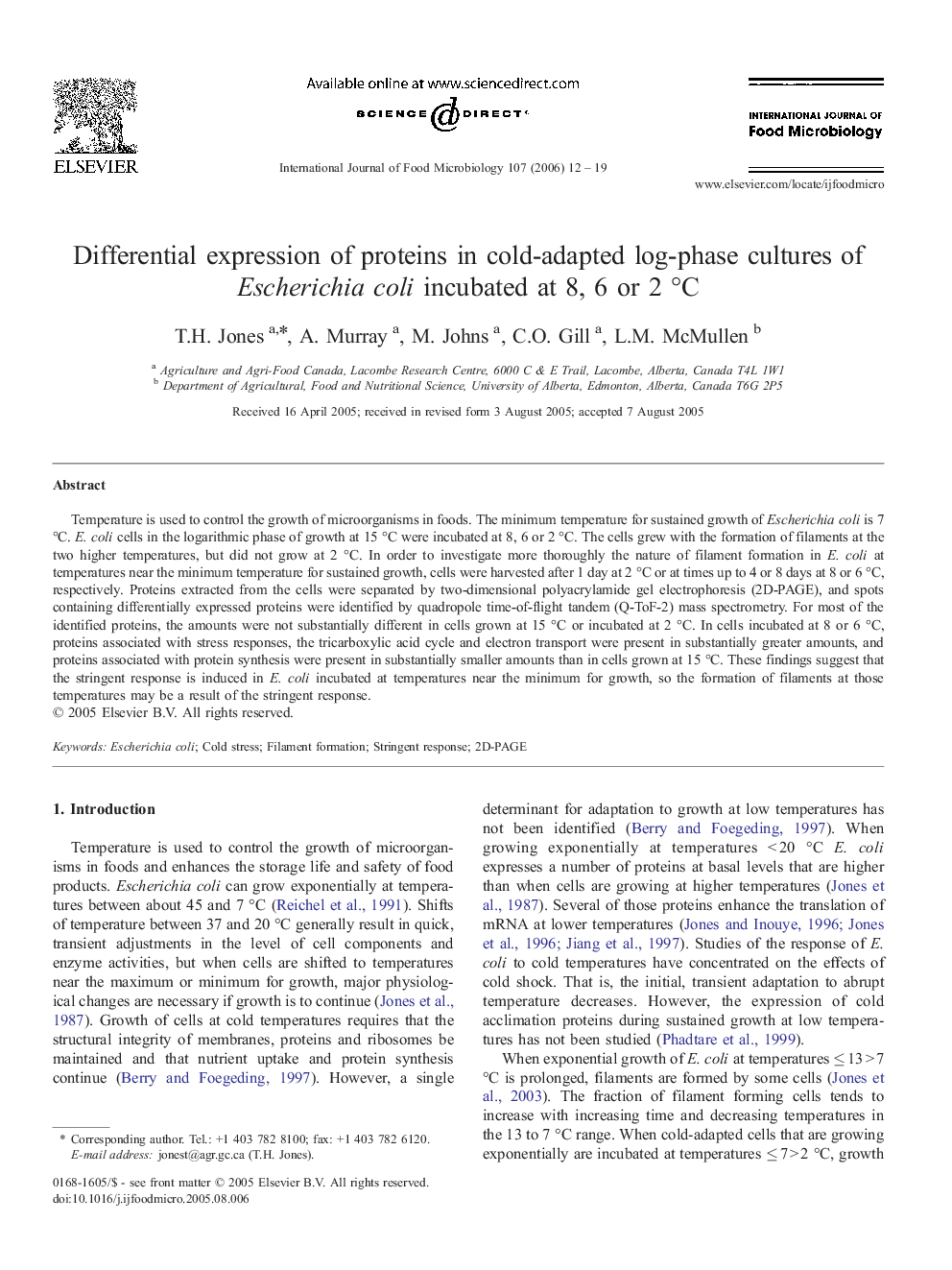| Article ID | Journal | Published Year | Pages | File Type |
|---|---|---|---|---|
| 4370211 | International Journal of Food Microbiology | 2006 | 8 Pages |
Temperature is used to control the growth of microorganisms in foods. The minimum temperature for sustained growth of Escherichia coli is 7 °C. E. coli cells in the logarithmic phase of growth at 15 °C were incubated at 8, 6 or 2 °C. The cells grew with the formation of filaments at the two higher temperatures, but did not grow at 2 °C. In order to investigate more thoroughly the nature of filament formation in E. coli at temperatures near the minimum temperature for sustained growth, cells were harvested after 1 day at 2 °C or at times up to 4 or 8 days at 8 or 6 °C, respectively. Proteins extracted from the cells were separated by two-dimensional polyacrylamide gel electrophoresis (2D-PAGE), and spots containing differentially expressed proteins were identified by quadropole time-of-flight tandem (Q-ToF-2) mass spectrometry. For most of the identified proteins, the amounts were not substantially different in cells grown at 15 °C or incubated at 2 °C. In cells incubated at 8 or 6 °C, proteins associated with stress responses, the tricarboxylic acid cycle and electron transport were present in substantially greater amounts, and proteins associated with protein synthesis were present in substantially smaller amounts than in cells grown at 15 °C. These findings suggest that the stringent response is induced in E. coli incubated at temperatures near the minimum for growth, so the formation of filaments at those temperatures may be a result of the stringent response.
